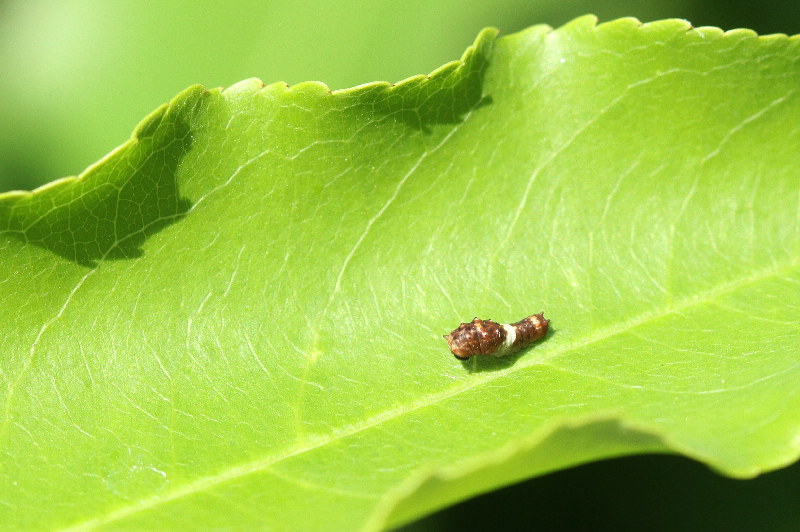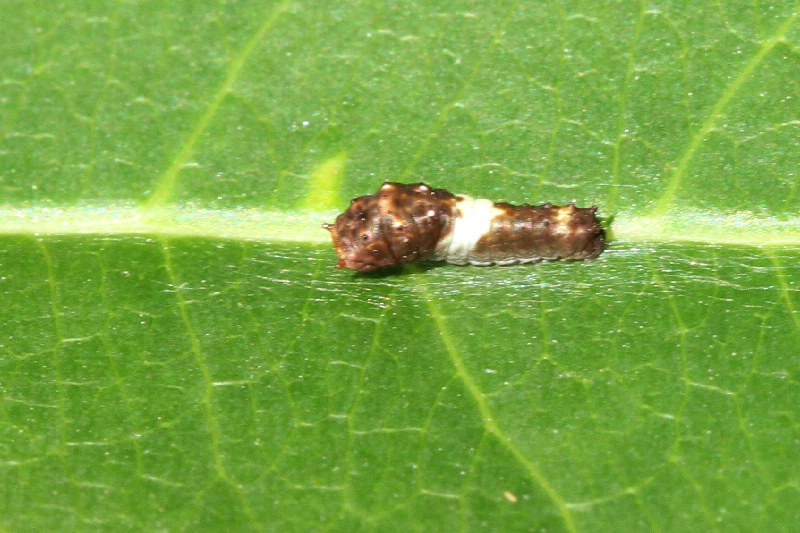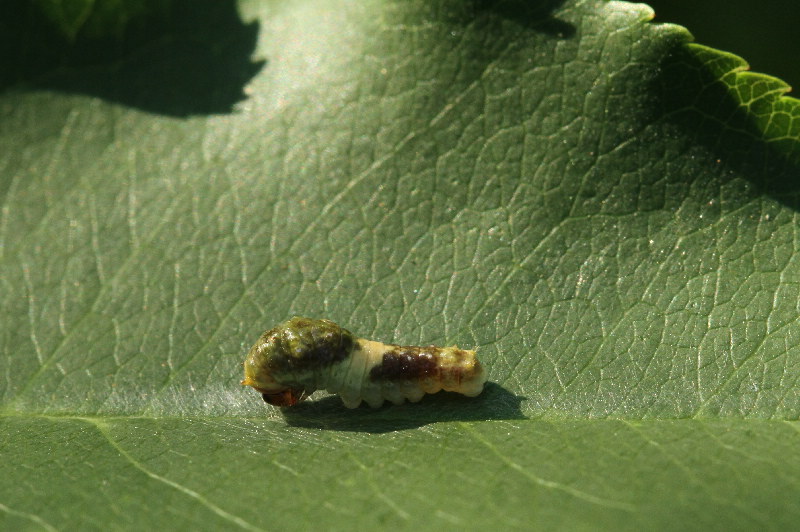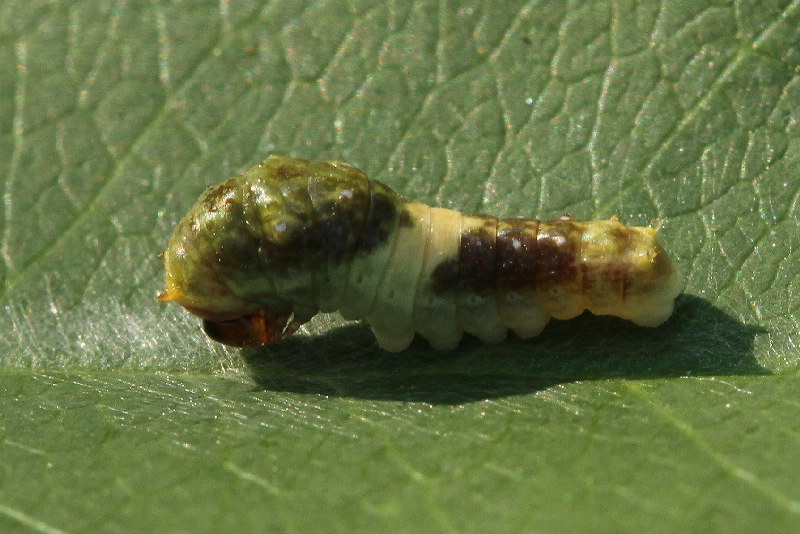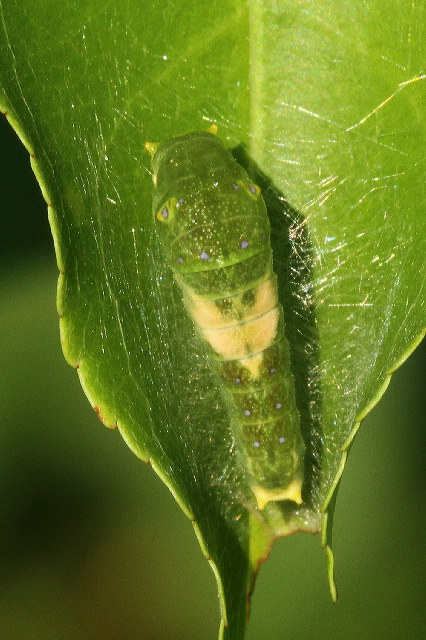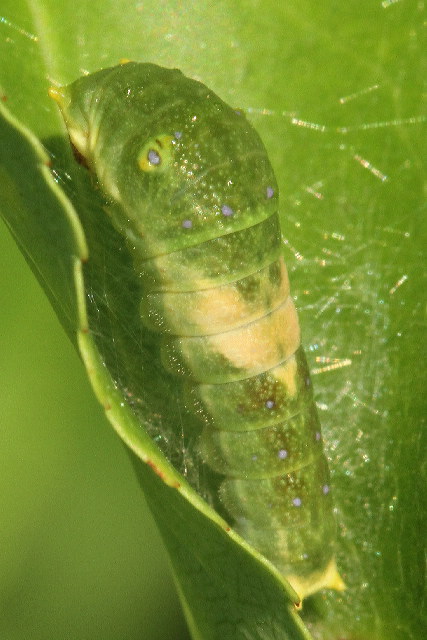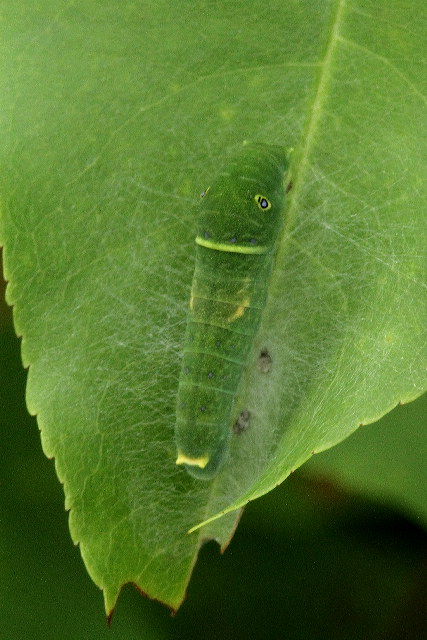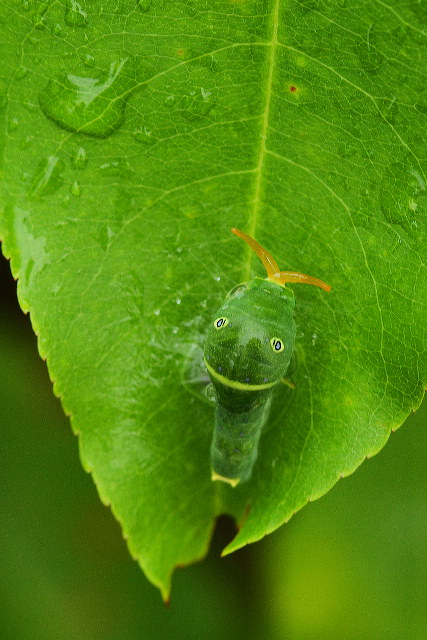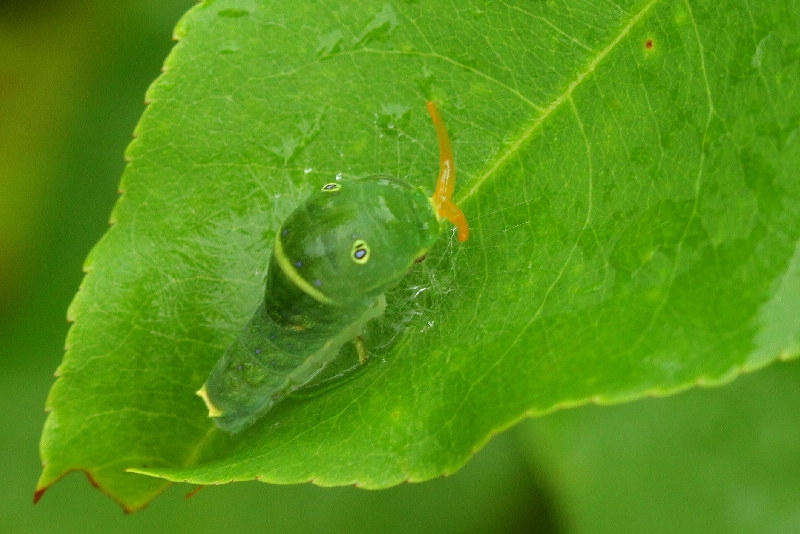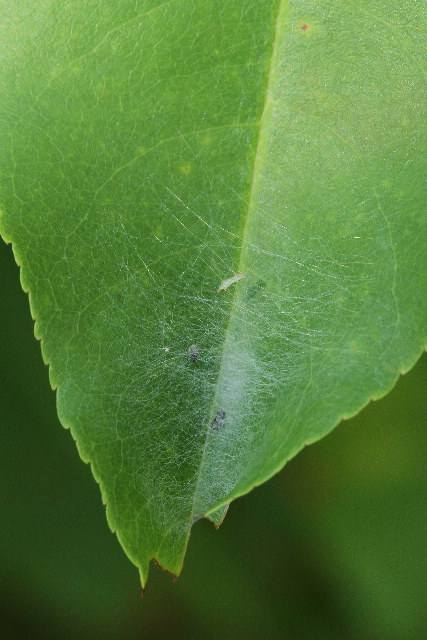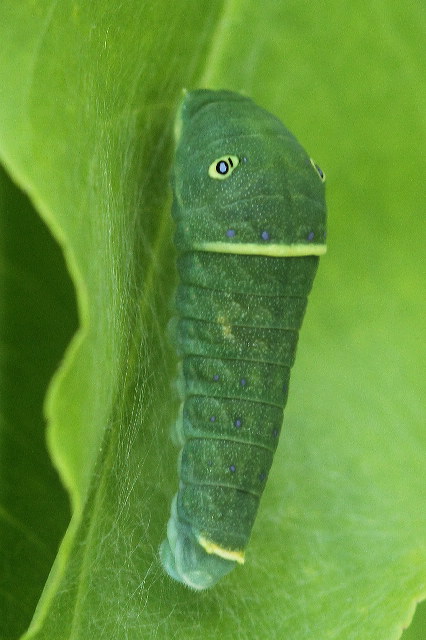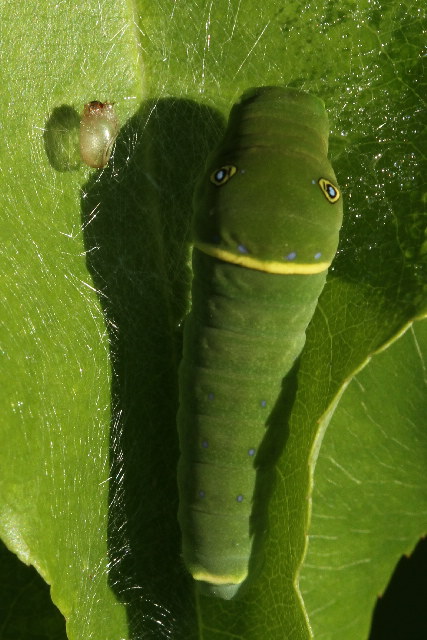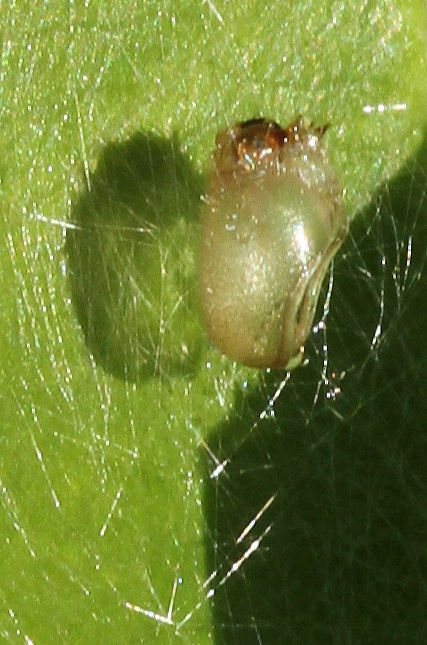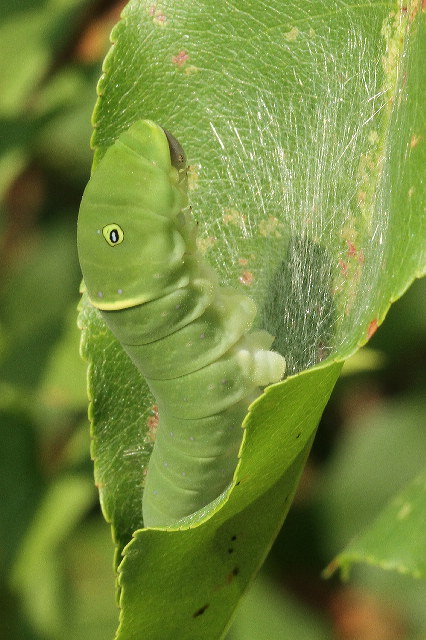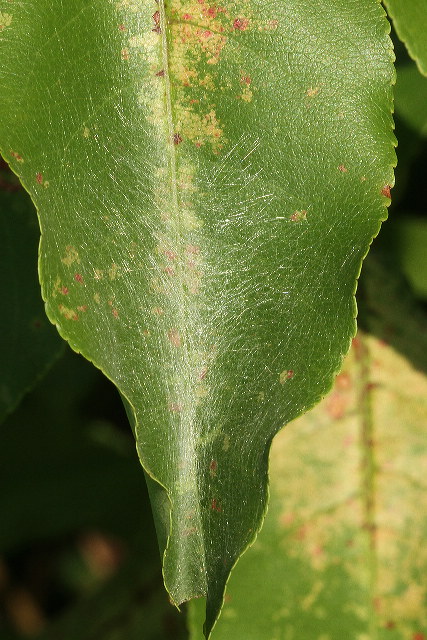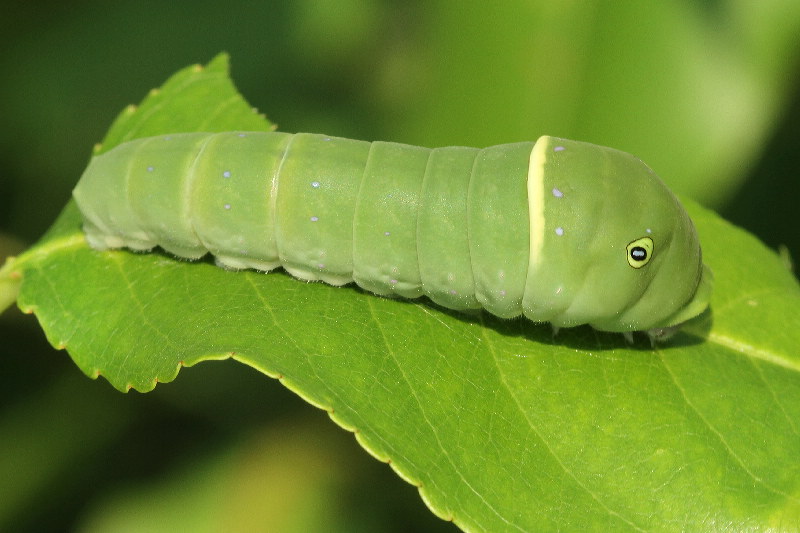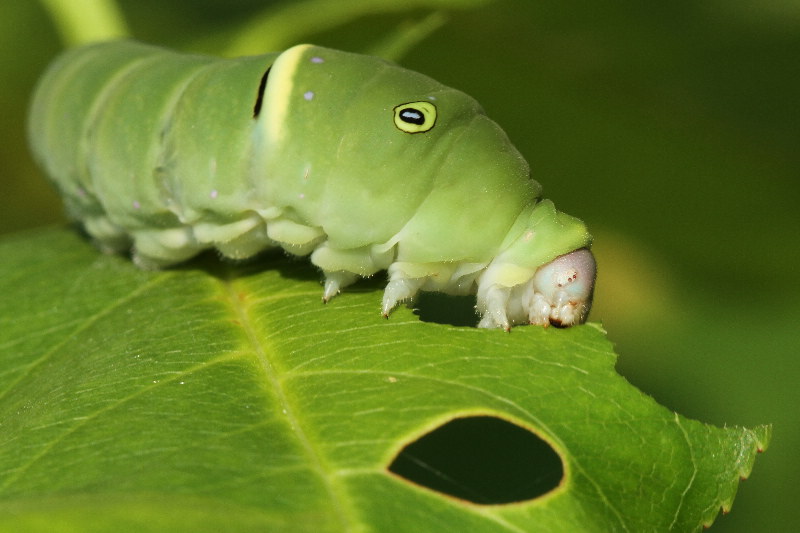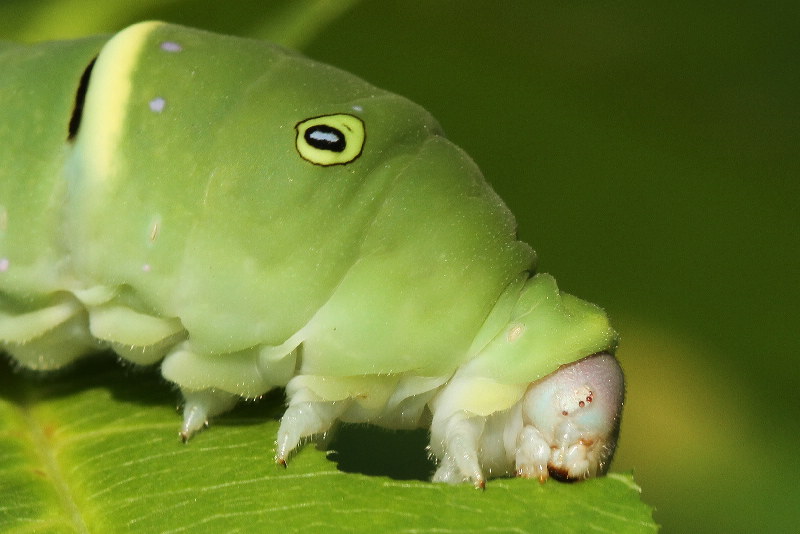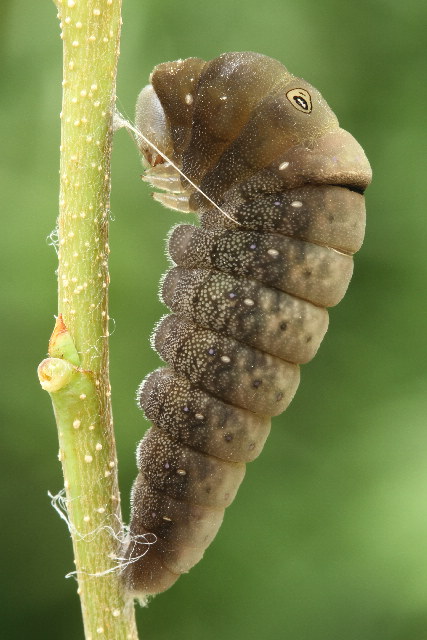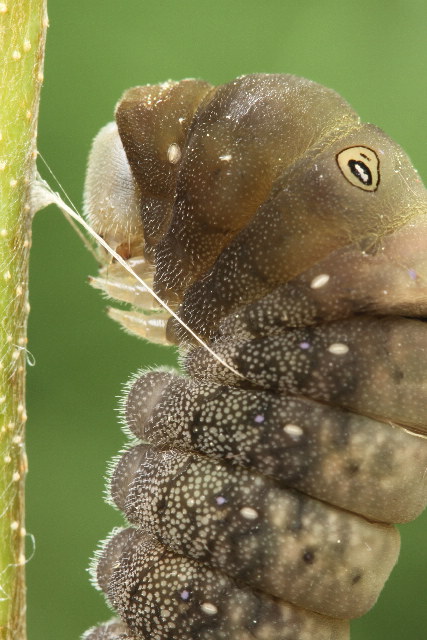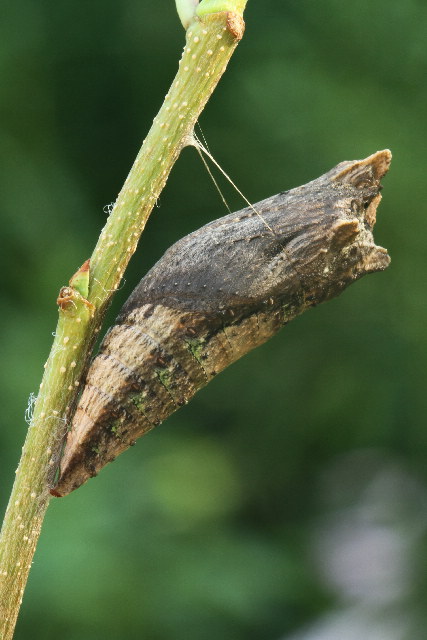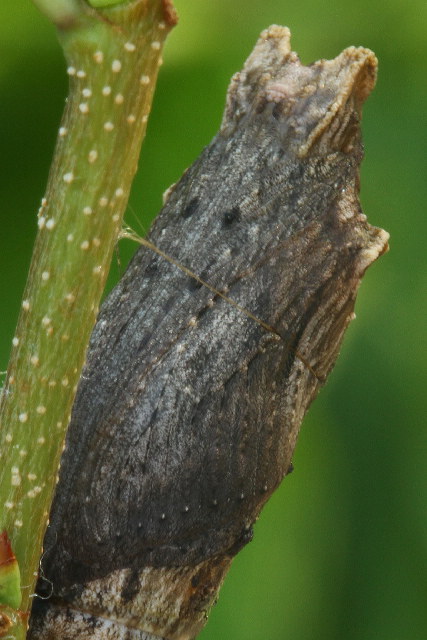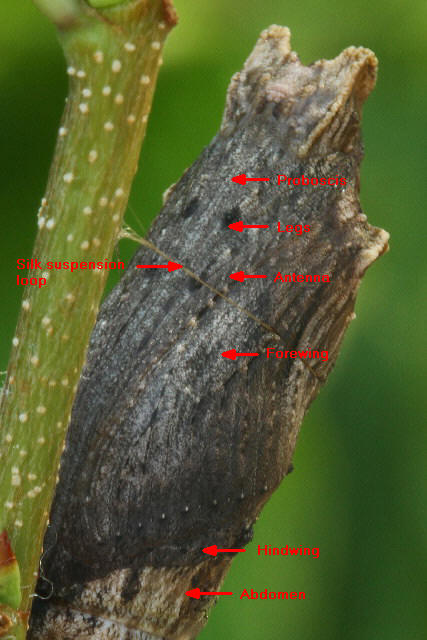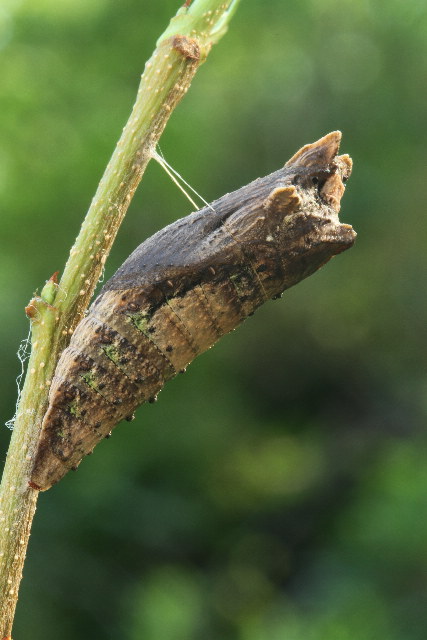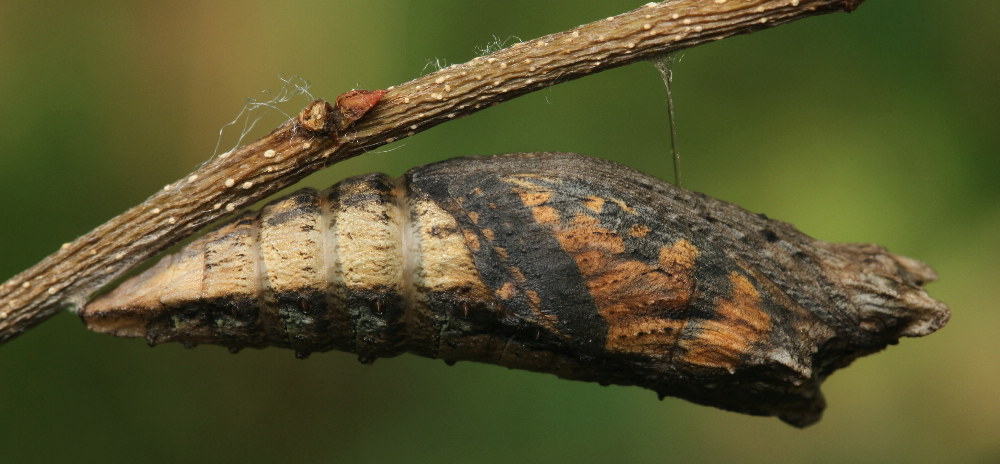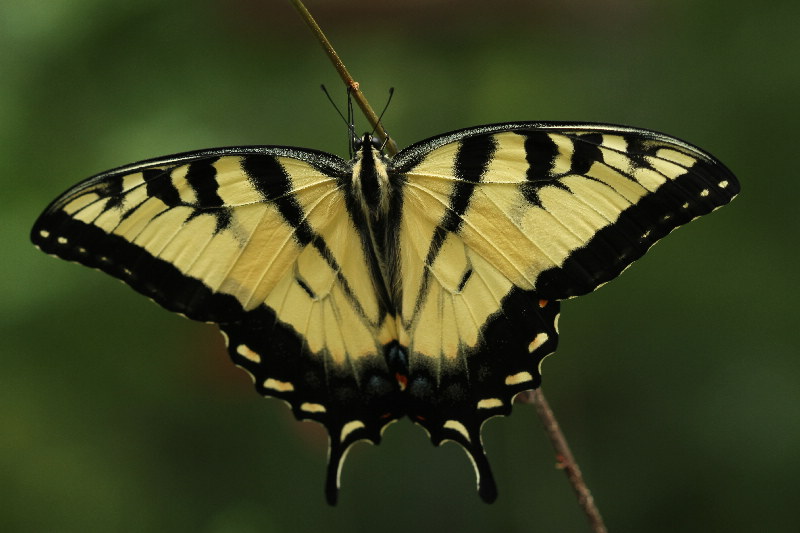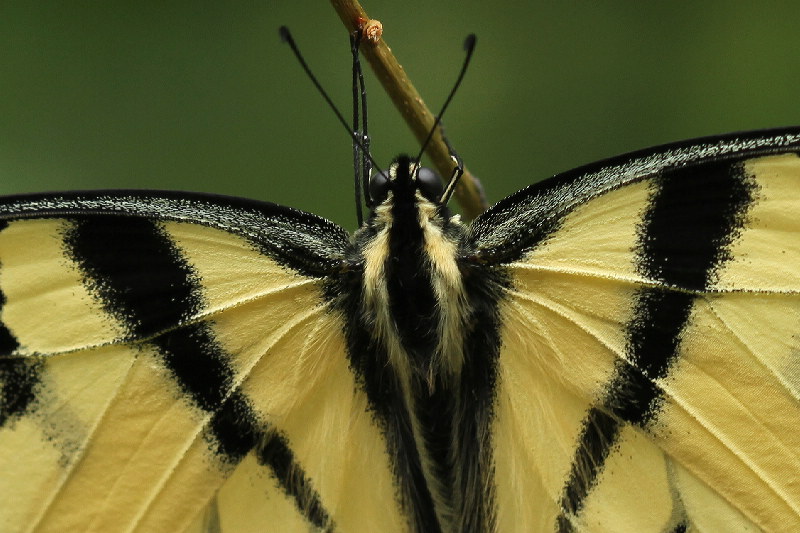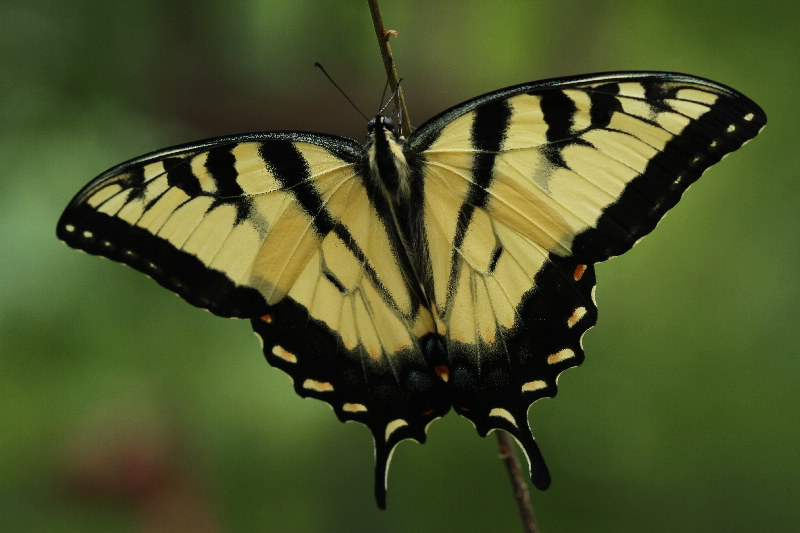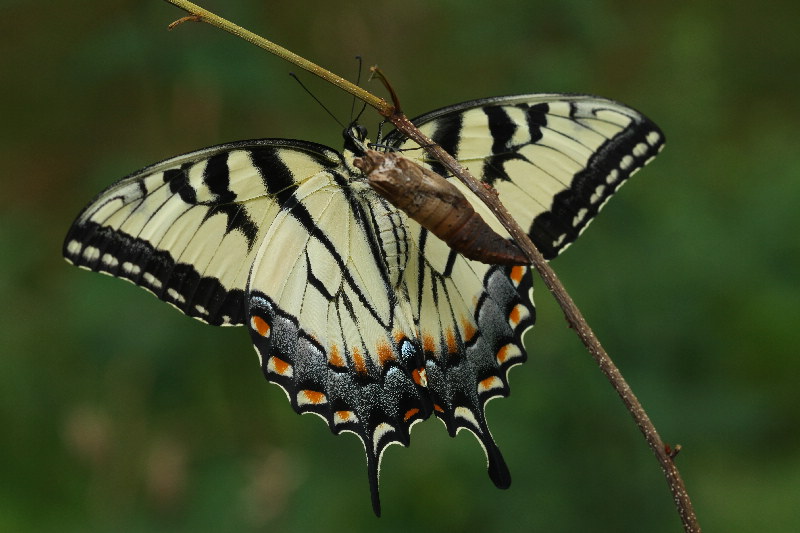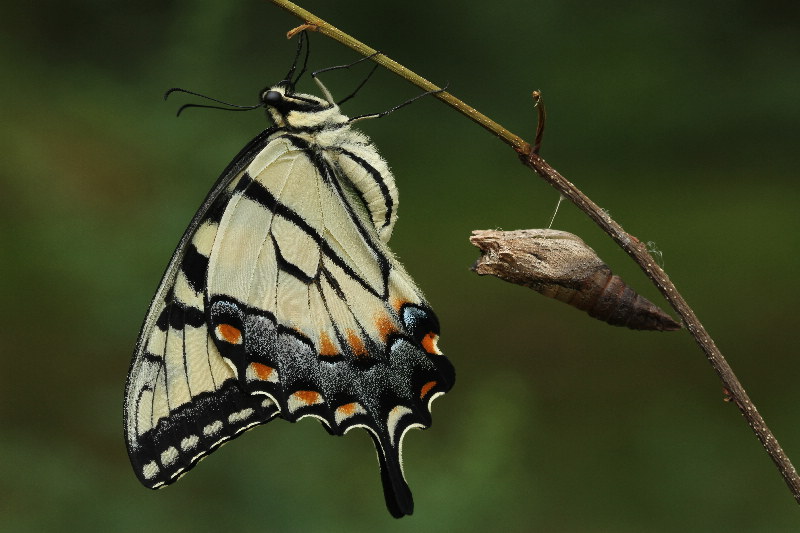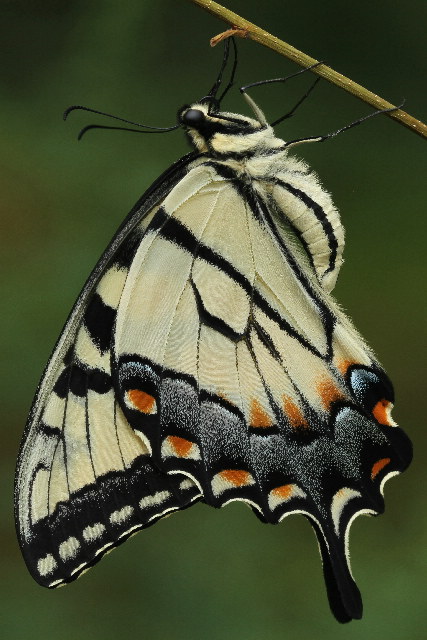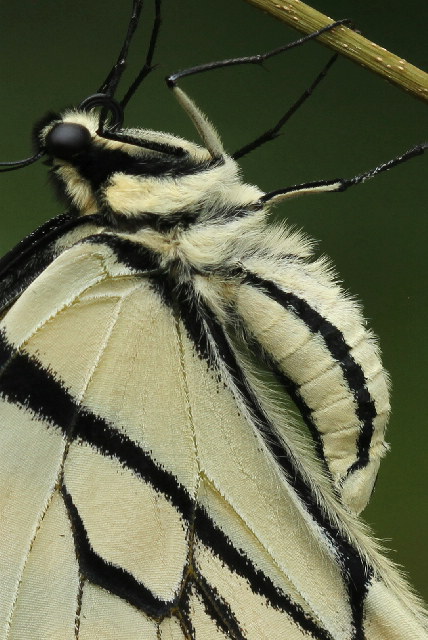Tiger Swallowtail (Papilio glaucus) - Life Cycle 2011 Stan Malcolm Photos |
mAir Line Home Page |
A "bird poop" 1st instar Tiger Swallowtail caterpillar. |
It already had a silk mattress to rest on. |
As it grew, it began to show green color, but still looked like a bird poop. |
|
The small caterpillar doubled in size and changed from brown to mostly green. I can't tell if it molted or just changed color as the skin stretched. |
|
Surely by now it had molted. |
When disturbed the intermediate stage caterpillars evert their Osmeterium which emits an odor (I think it resembles peaches) and may function to startle predators. |
|
The silk mattress where the caterpillar rested was empty one morning. |
I found the caterpillar on another branch, on a new mattress. |
After a molt, the discarded head capsule of the previous instar clung nearby. |
You can see all the head details on it, including all the mouthparts. |
One morning I noticed that the full-sized caterpillar was active on its silk mattress, nodding its head from side to side. |
A few minutes later, it was gone... |
...but only up the stem to another leaf... |
...where it began feeding. |
At this point I transferred the caterpillar to a cage, knowing that before transforming to a chrysalis, many caterpillars wander away from their host plant. I wanted the chance to observe the remaining stages. |
Two days later, the caterpillar was preparing to transform into a chrysalis. The color had changed to brown. It had attached itself to a cherry twig by a loop of silk around the first abdominal segment and a button of silk at the tip of the abdomen. |
The head capsule and thoracic true legs appeared to be empty now, and the abdominal prolegs were pretty much contracted into the body wall. These structures will be radically transformed or absent in the chrysalis and butterfly. |
Overnight, the caterpillar transformed into a chrysalis. |
Many of the adult butterfly structures were now visible on the surface... |
...as identified here. |
|
August 5th. The Tiger Swallowtail (Papilio glaucus) chrysalis I photographed on July 22nd (and observed as a caterpillar in previous weeks) was ready to emerge as a butterfly this morning. Note how the adult wing pattern is clearly visible through the skin. |
Two hours later when I looked again, the butterfly (a male) was fully expanded and almost ready to fly. |
|
|
|
|
|
Shortly after I finished photographic the butterfly, it flew off. |
